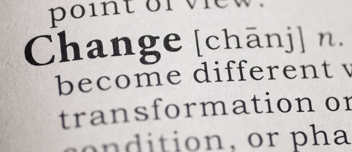The Importance of Integrating Individual and Organizational Change

3 Mins
Updated: August 19, 2025
Published: October 12, 2021

Organizations today regularly introduce complex changes to capitalize on opportunities and address challenges. Such changes might involve adopting new strategies, improving operational processes, or implementing new technology platforms. Regardless of type, many organizational changes impact the ways individual people perform their day-to-day work. Because the success of organizational changes depends on individuals engaging, adopting and using them, we must manage changes at both the individual and organizational levels concurrently.
Individual Change Management
Change management is the application of a structured process and set of tools for leading the people side of change to achieve a desired outcome. Whether dealing with changes at home, in the community, or at work, all individuals move through a predictable journey—from their current state, through a transition state, to a future state. Individual change management is about supporting and enabling a person through the transition, so they can successfully engage, adopt and use a change.
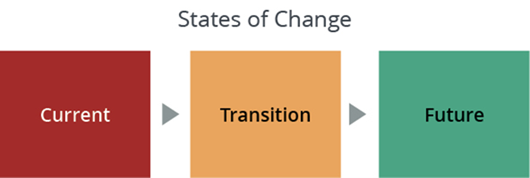
The Prosci ADKAR Model for individual change is a key component of the Prosci Methodology. ADKAR is an acronym for the five outcomes an individual needs to achieve to successfully adopt a change: Awareness, Desire, Knowledge, Ability and Reinforcement.
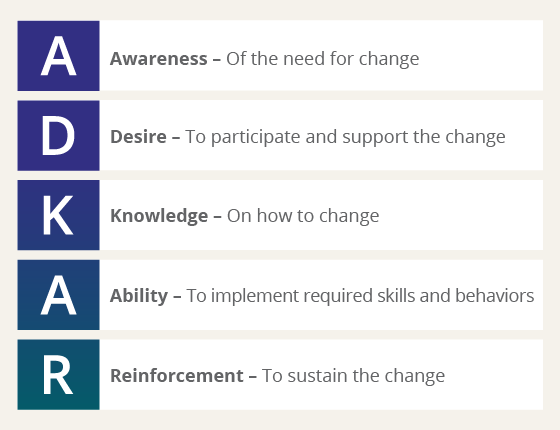
To enable individuals to achieve each ADKAR outcome and move through their ADKAR journeys, change practitioners address barrier points along the way. This includes answering these questions:
Awareness of the need for change
- Why is the change happening?
- Why is the change happening now?
- What is the risk of not changing?
Desire to participate and support the change
- What are the personal motivators and organizational drivers that would cause me to support the change?
Knowledge on how to change
- What knowledge, skills and behaviors are required during and after the change is implemented?
Ability to implement required skills and behaviors
- How do I demonstrate the ability to do my job the new way?
- What barriers may inhibit me from making the change?
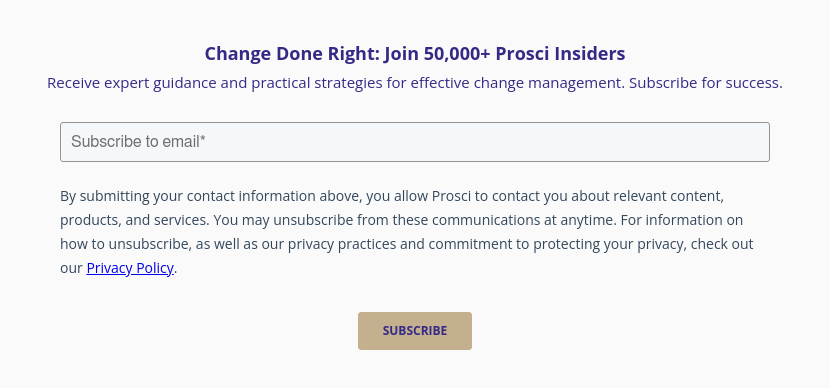
Reinforcement to sustain the change
- What will make the change stick?
- What are the rewards, recognition, incentives and consequences?
As a model for individual change, the ADKAR Model helps:
- Make sense of change
- Guide development of change management plans
- Measure progress at the individual and group levels
- Diagnose gaps when people are "stuck" in their transitions
- Develop corrective actions
- Enable people managers to effectively lead change with their teams
Organizational Change Management
Organizational change management is about identifying, enabling and executing the actions required at the initiative level to support impacted individuals through their transitions. The Prosci 3-Phase Process enables change practitioners to accomplish this goal in a structured, repeatable and adaptable way.
Prosci 3-Phase Process
The Prosci 3-Phase Process for organizational change comprises three phases: Phase 1 – Prepare Approach, Phase 2 –Manage Change, and Phase 3 – Sustain Outcomes.

The Prosci 3-Phase process bridges the gap between individual and organizational change. While the ADKAR Model focuses on how to support a single person to make a successful change, the organizational change management process focuses on how to enable those individual changes for the entire organization.
Each phase includes stages with associated activities for change management practitioners, along with plain language questions designed to clarify goals and simplify concepts for stakeholders:
Phase 1 – Prepare Approach
- What are we trying to achieve?
- Who has to do their jobs differently and how?
- What will it take to achieve success?
Phase 2 – Manage Change
- What will we do to prepare, equip and support people?
- How are we doing?
- What adjustments do we need to make?
Phase 3 – Sustain Outcomes
- Now, where are we? Are we done yet?
- What is needed to ensure the change sticks?
- Who will assume ownership and sustain outcomes?
The Prosci Methodology
The Prosci Methodology integrates the individual and organizational change management approaches necessary to achieve intended benefits from change projects and initiatives. Including the ADKAR Model, Prosci 3-Phase Process, and Prosci Change Triangle (PCT) Model, the Prosci Methodology offers a comprehensive framework with models, tools, assessments, and processes for managing the people side of change.
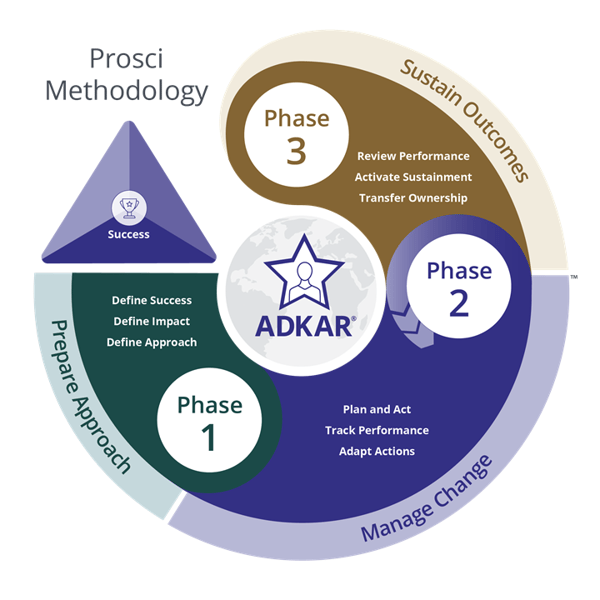
Why Integrate Individual and Organizational Change?
Effective change management requires both an individual change management model and an organizational change management process. The individual model provides an outcome-based orientation while the organizational process provides an activity-based orientation.
Without an individual change management model, it is easy to focus on completing activities (e.g., sending a newsletter) instead of what needs to be achieved (e.g., explaining why the change is necessary). Without an organizational change management process, changes that impact dozens or hundreds or thousands of individuals quickly become unmanageable.
Successful change management results from integrating an outcome-oriented individual change management approach and an activity-oriented organizational change management process. By aligning what we are trying to achieve with what we are doing, the Prosci Methodology provides the structure and tools necessary to drive project results and outcomes by managing the people side of change.



